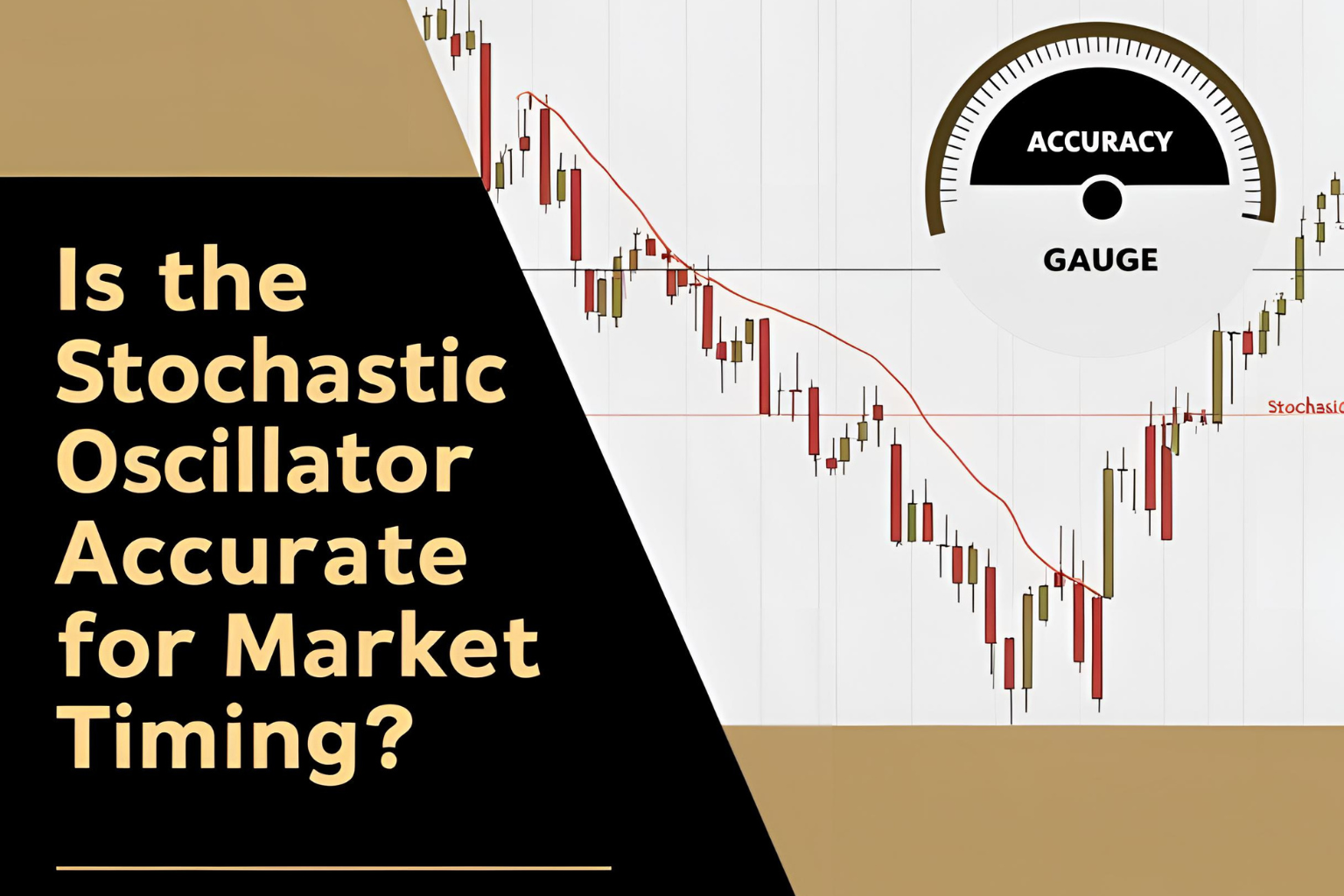Is the Stochastic Oscillator Accurate for Market Timing?
Introduction
The stochastic oscillator is one of the most popular momentum indicators used by traders across all markets. But how accurate is it when it comes to market timing? Can you rely on its signals alone to enter and exit trades? In this post, we’ll explore the stochastic oscillator’s accuracy, when it performs well, and when you should be cautious.
What the Stochastic Oscillator Measures
The stochastic oscillator compares a security’s closing price to its recent price range over a given period. It provides insight into potential reversal zones, especially when prices are overbought or oversold. It is not a trend-following tool—its strength lies in identifying momentum shifts.
How Accurate Is It?
✅ Strengths
- Effective in range-bound markets: Provides timely buy and sell signals during sideways price action.
- Clear visual signals: Crossover of %K and %D lines is easy to interpret.
- Combines well with other indicators: Increases accuracy when paired with trend confirmation tools (e.g., moving averages, MACD).
⚠️ Limitations
- False signals in trending markets: In strong uptrends or downtrends, the oscillator can remain overbought/oversold for long periods.
- Signal lag: By the time a crossover occurs, price may have already made a significant move.
- Sensitivity: Faster settings like 5,3,3 increase responsiveness but also the risk of whipsaws.
When Is the Stochastic Oscillator Most Accurate?
| Scenario | Accuracy |
|---|---|
| Sideways/Consolidating Market | High |
| Trending Market (without filters) | Low |
| With Trend + Support/Resistance | Moderate to High |
| Used with Divergence | High |
| Standalone Use | Medium (context-dependent) |
Improving Accuracy
- Combine with Trend Direction
- Only take buy signals in an uptrend and sell signals in a downtrend.
- Use Divergence Patterns
- When price action disagrees with the oscillator, reversal is more likely.
- Add Volume Confirmation
- Look for volume surges during oscillator crossovers.
- Adjust Settings by Timeframe
- Slower settings for swing trading (e.g., 14,3,3), faster for intraday (e.g., 5,3,3).
Real-World Example
A stock in a flat trading range shows:
- Repeated overbought/oversold stochastic signals
- Clear %K and %D crossovers
- No trending bias
In such a scenario, the stochastic oscillator gives highly accurate reversal entries. But in a strong uptrend, it might show multiple premature sell signals, which can mislead.
Conclusion
The stochastic oscillator’s accuracy depends heavily on market context. It excels in sideways conditions and when used with confirmation tools. However, relying solely on stochastic for market timing—especially in trending markets—can lead to false signals. To boost accuracy, always combine it with trend filters, divergence, and volume cues.
FAQs
Q1. Is stochastic oscillator accurate for scalping?
It can be, especially on 1-min or 5-min charts with fast settings and trend confirmation.
Q2. Can stochastic predict market tops and bottoms?
It can highlight potential reversal zones, but no indicator can guarantee tops or bottoms.
Q3. What makes stochastic oscillator give false signals?
Strong trending conditions without proper filtering often lead to misleading entries.
Q4. Is stochastic better than MACD for timing?
It’s more responsive than MACD but requires more filtering to avoid whipsaws.
Q5. Should I trust stochastic signals blindly?
No. Always use it as part of a broader trading plan, not in isolation.




